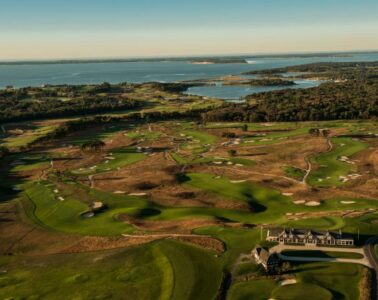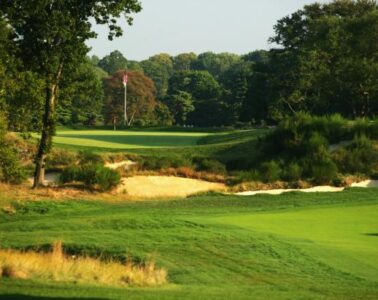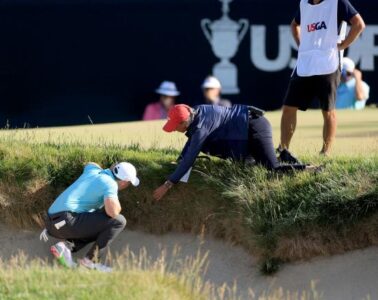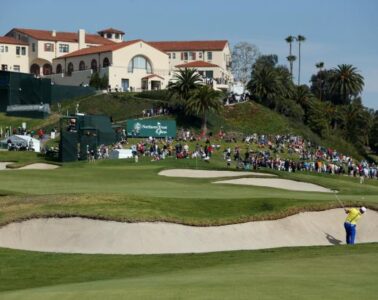The US Open at Torrey Pines represents the end of a design era in major-championship golf.
Tiger Woods double fist-pumped and howled to the sky amid delirious screams of a rapturous gallery. He had just rolled in a birdie putt to tie for the lead on the 72nd hole of the US Open, and for several minutes in June 2008, the 18th green of the South course at Torrey Pines in La Jolla, California, was the blinding but bittersweet centre of the sports universe.
Though it would not become official until the next day after a 19-hole playoff with an unblinking Rocco Mediate, the 2008 US Open was the Emperor’s most emphatic conquest. Woods’ 14th Major title (and sixth since 2005) seemed like the latest inevitable step towards an unprecedented 19 Major-championship trophies. But Woods played through pain on a severely damaged leg that afterwards required surgery. Eleven years would pass before he would win another Major, the 2019 Masters at 43. No one could have predicted it then, but that moment at Torrey has increasingly represented glorious victory presaging the collapsing twilight of one of golf’s greatest Major-championship epochs.
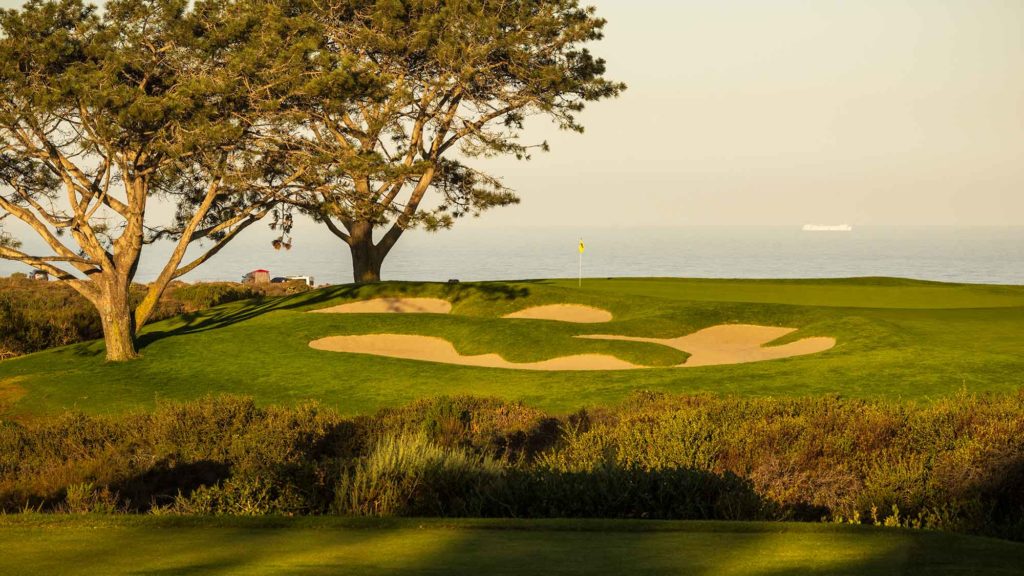
The return of the US Open to the South course at Torrey Pines in June marks the twilight of another significant era in Major-championship golf: 2021 is likely to be the final time a men’s Major championship is contested on a golf course prepared by architect Rees Jones, who remodelled Torrey Pines in 2001 and renovated it again in 2019 ahead of this year’s event.
During the past 33 years, Jones modified 12 courses for the US Open and PGA Championship, covering 22 tournaments and four Ryder Cups. No other living architect has come close to matching his widespread association with Major-championship golf or the influence on how these competitions look and play. Every design decision – fairway widths and orientations, tee adjustments, putting-surface expansion and contour, tree removal, bunker locations and depths – plays a role in determining how tournaments unfold and who is most capable of contending. Jones’ architecture has impacted the fortunes of a generation of Major-championship winners with a mirror dimension of also-rans and what-ifs. But the US Open and PGA Championship will travel in new directions beginning in 2022, ones not likely – at least as it appears – to include the name or imprint of Rees Jones.
If Torrey Pines ends up being the last time Jones’ design ideas are presented in a men’s Major, it’s for several reasons. The first is that for most of the next decade the USGA and the PGA of America are moving their tournaments beyond his consultation – the announced US Open line-up indicates the USGA is refining its footprint, settling on a market-driven east coast-west coast rotation of courses that includes Winged Foot, Shinnecock Hills, Oakmont, Pinehurst No.2, Pebble Beach and to-be-determined California-based courses. The PGA of America is venturing more widely but to sites it has visited this century, mixing in several additional venues such as Aronimink Golf Club near Philadelphia (2026) and PGA Frisco, a Gil Hanse design at the new PGA headquarters in Frisco, Texas, (2027 and 2034). The first vacant dates aren’t until 2028 for the US Open and 2030 for the PGA Championship.
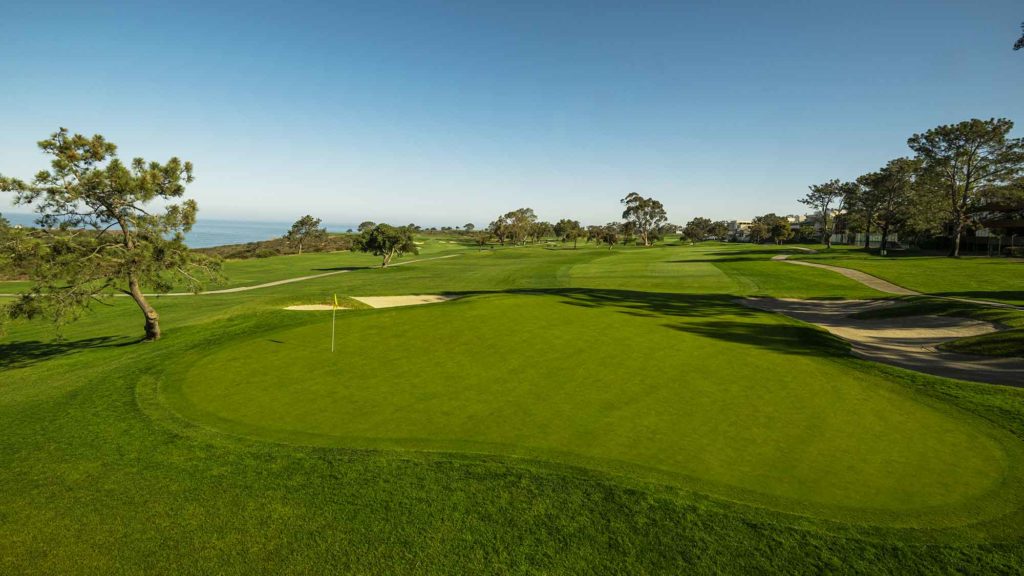
More significantly, an increasing number of core championship courses have embraced contemporary architectural trends at odds with Jones’ modernist style, restoring their designs to the more natural, organic appearances of their early years. Looking towards the future, clubs are turning back to their past. Baltusrol’s Lower course (site of the 2029 PGA Championship) and Congressional’s Blue course (the 2031 PGA), two clubs Jones had remodelled in preparation for previous PGAs and US Opens, have each undergone substantive redesigns during the past 18 months based on the historical interpretations of Hanse and Andrew Green, respectively, rather than Jones.
The program changes are important because course architecture does affect tournament outcomes. If the players are the actors in Major-championship theatre, and the governing bodies are directors capable of manipulating drama via site selection and course set-up, architects are set designers who construct the stage and scenery against which the characters strain. Years before Woods sank the famed birdie putt, Torrey Pines was a beloved but scruffy public course with scenery that overwhelmed the quality of the golf. Jones completely remade the 1957 William F. Bell design for the US Open, adding length and fairway hazards, rebuilding every putting surface and shifting several greens, like the third, fourth and 14th, closer to the property’s canyon edges. The green pads were propped like pedestals with deep, bracketing bunkers recessed into their bases.
Jones extended the championship tees at the par-5 18th 70 metres and installed two bunkers in the left rough. An existing bunker farther down the fairway on the left was adjusted and expanded towards the tee. This is the bunker Woods drove into during the final round; had it not been modified, his tee shot probably would have settled in the rough. Without a raised bunker face near his ball, it’s not certain Woods would have laid up for position like he did; he might have gone for the green in two to increase the likelihood of making the birdie he needed to tie, a choice that would have brought the pond fronting the green (also enlarged by Jones) into play. Without Jones’ modifications, the 72nd hole – and the entire tournament – would have set up differently.
‘Jones’ architecture has impacted the fortunes of a generation of major-championship winners.’
The most obvious alterations made for this year’s US Open include the reconstruction of the long northward running par-4 fourth. The fairway was widened as far as possible towards the left-side cliff overlooking the ocean and Torrey Pines State Preserve, though the rolled edge of land, rather than forming a hard precipice, means the hole can only get so close to the drop-off. The fairway bunkers on the par-4 10th are now staggered to create short and long landing areas requiring a risk assessment from the tee. Jones added two carry bunkers to the left of the driving zone at the cross-canyon par-5 13th and built a new tournament tee on the par-4 17th, creating an angle that now brings the steep ravine on the left more into play. Bunkers throughout the course were reconstructed and adjusted, pulling them flush to the mowing lines, allowing the USGA to bleed fairways into them, and the championship tees now max out at 6,997 metres (7,652 yards).
Jones believes these amendments make an already respected tournament course even stronger. “Torrey Pines has proven to be a championship test that the players like,” he says. “It’s a course that fits their eye, but it’s a test. The greens will hold their shots, but there are hazards around the greens and places you can’t miss it. Yet it’s still recoverable.” With few true doglegs, most of the holes set up to receive straight drives, or drives cut or drawn off flanking bunkers. The elevated greens, typically featuring some orientation of back-to-front slope, offer visibility and relatively level hole locations separated by tiers or steps.

Says Greg Muirhead, senior designer who joined Jones’ architectural firm in 1984, “Our concept has always been ‘greens within greens’, where if you hit a really good approach shot, you’ll have a relatively level putt, but if you miss that spot, you’ll have to come over some contour. We’ve never really done fall-away greens or a lot of false fronts. We try to make the greens a reasonable size and receptive.”
These architectural qualities – visibility, defined strategies and hole outlines, elevated green platforms and the ability to recover – have categorised much of the Jones approach to course design and Major-championship golf. The architecture engages in a social contract with the player – it’s not there to trick but to enforce, with an offer of fair treatment for expertly executed shots.
“The pros can score well at Torrey,” Jones says. “It’s going to be their own fault if they don’t achieve their goal.”
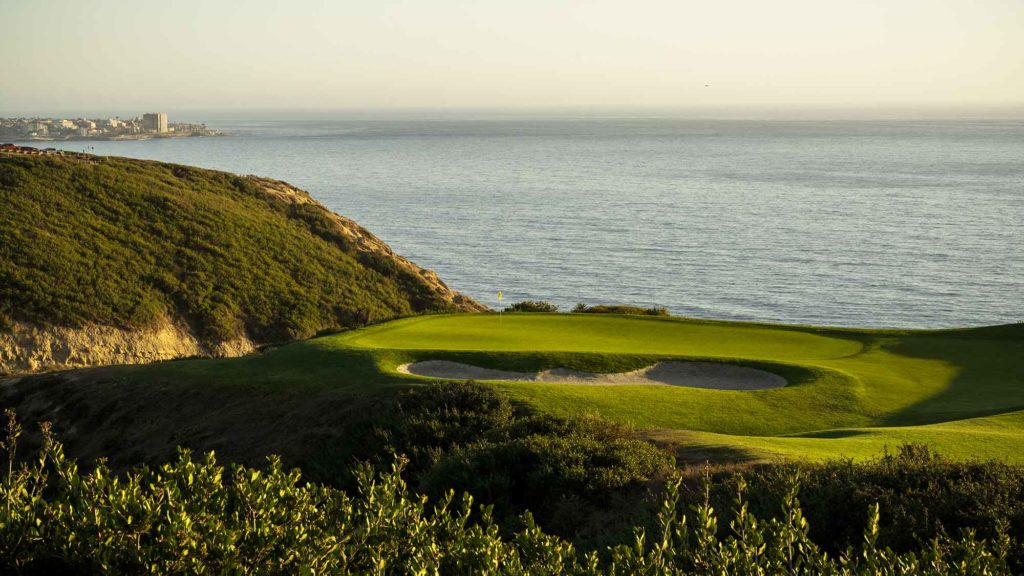
His bunkering, as found at places like Torrey Pines or Bellerive, is edged with clean, artistic lines that curve and play with height and depth, suggesting a beaux-art formality. This sense of composure and tradition, and an almost self-conscious commitment to the proportionality between crime and punishment, runs through most of his tournament courses. “In my career the most important thing has probably been to make sure a recovery shot can be achieved and not to over-penalise a slightly errant shot,” he says. “That’s what the players most criticise.”
David Fay, USGA executive director from 1987 to 2010, worked closely with Jones on numerous remodel projects, including overseeing the reconstruction of the greens at Pinehurst No.2 in preparation for the 1999 US Open, based on specs taken from the 1962 US Amateur. (Bill Coore and Ben Crenshaw have overseen the most recent alterations of the No.2 course.)
“Rees was governed, in my opinion, by the old outline of what a championship course should be,” Fay says, adding that it’s a view he inherited from his father, Robert Trent Jones, who gained the nickname “The Open Doctor” for his famous (some would say infamous) alterations of courses like Oakland Hills, Baltusrol Lower and Firestone Country Club for Major events. (Rees inherited the Open Doctor nickname, too.) It’s an outlook, espoused by executive doyens like Richard Tufts, Joseph Dey, Sandy Tatum and P.J. Boatwright from the 1950s through the ’80s, that places a premium on accurate driving to narrow fairways, the use of trees and rough, fast and firm greens, and insistence that there should be a penalty for wayward shots. In Jones’ case the penalty should be firm but never absurd.

Fay says Jones was faithful to the notion that the championship course should be a stern challenge that yielded only to excellence. “I felt that way, too,” Fay says. “I thought that once a year I wanted these guys to feel like they’ve been in a fistfight. I want to knock them out of their comfort level. It’s what Sandy Tatum said: ‘We’re not trying to embarrass the greatest players; we’re trying to identify them.’ But I think his thought-cloud, that he never actually uttered, would be, But if we embarrass them a little bit, that’s OK, too.”
‘Every design decision plays a role in how tournaments unfold and who might contend.’
Jones first collaborated with The Country Club in Brookline, Massachusetts, to bolster its defences for the 1988 US Open. Using vintage photographs from the early 1900s, he helped reestablish the club’s foundational turn-of-the-century aesthetic. Many designers view it as the profession’s first historical restoration. Curtis Strange defeated Nick Faldo in an 18-hole playoff, and the tournament’s popularity prompted other clubs to hire Jones to oversee their modifications. A significant number of jobs involved remodelling his father’s work. Hazeltine National, Baltusrol and Oakland Hills called. At Congressional, Jones rebuilt much of the Blue course for the 1997 Open, regrading fairways to open up sightlines and remove blind tee shots. After walking a decrepit Bethpage Black in the mid-1990s with Fay, who spearheaded the organisation’s push to bring the US Open there and to other public facilities like Torrey Pines, Jones agreed to rebuild the course for no charge (the USGA provided the construction fund). Once considered among the USA’s great courses, the Black had fallen into disrepair and off US Golf Digest’s ranking of America’s 100 Greatest Golf Courses. After the renovation and the 2002 Open, the Black returned to the list where it currently resides at No.40.
Though he can’t claim credit for creating the theatres themselves (that belongs to A.W. Tillinghast, Donald Ross and others, even his father), Jones’ set pieces usually allowed the skills of the best players of the moment to radiate. The stages he prepared “fit the eye”, as he puts it, and made it possible for professional players to visualise different shots while dropping sandbags on errant contestants. More often than not the architecture melded with the temperament of tour pros, who want to know the exact lay of the land, what is being asked of them on any given swing and to trust there will be no gimmickry or unexpected surprises on the other side.
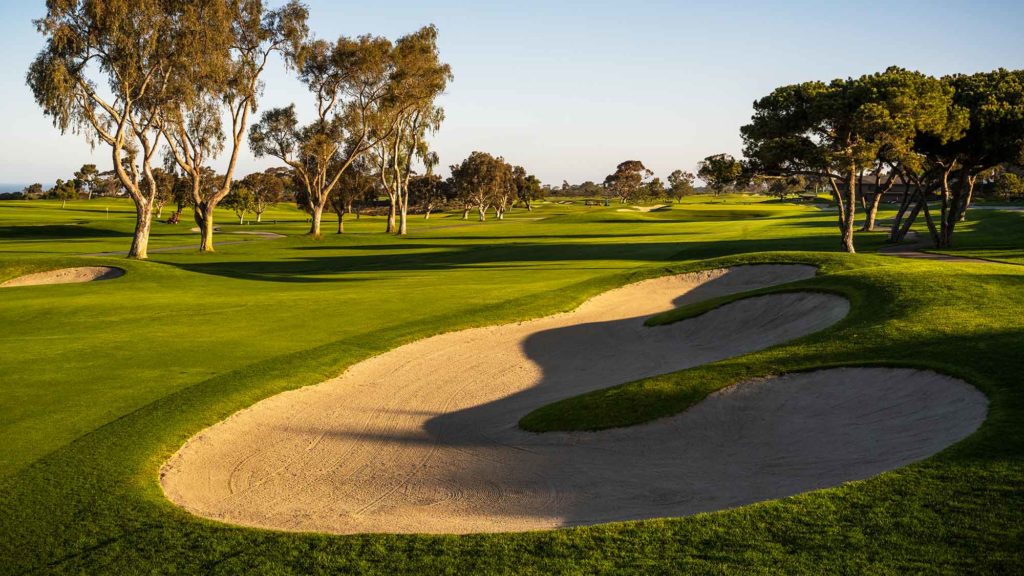
At Congressional in 1997, three players – Ernie Els, Colin Montgomerie and Tom Lehman, ranked seventh, sixth and third in the world – battled down to the end. Woods and Phil Mickelson, ranked first and second at the time, finished in those same positions at Bethpage in 2002. The 2019 PGA at Bethpage came down to the No.3 player, Brooks Koepka, holding off Dustin Johnson, the No.1 player.
“I think my legacy is that I helped crown the proper champions,” Jones says. “Tiger Woods won a lot on courses I re-did. Bethpage and Torrey Pines are probably the ones that we transitioned most to bring the championship game into a public arena, and Tiger won on both of those. East Lake, too – Tiger sure made it look good [in 2018].”
Though there’s nothing currently scheduled, it’s not a given that Torrey Pines will be the Open Doctor’s last house call. Once Bethpage and Hazeltine National host the Ryder Cup in 2025 and 2029, they will likely re-enter the pool of courses to be considered for future Majors. West coast venues will also be prioritised, and if Torrey Pines can replicate the kind of bittersweet magic it did in 2008, it could be awarded an upcoming date. Then again, even if Torrey Pines, Bethpage or Hazeltine are extended a Major, another decade might pass in the interim, giving each time to pursue other architectural directions.

Speaking of bittersweet, an ironic coda to the Rees Jones era is that the architect who introduced the practice of historical restoration at Brookline seems to have been displaced by a movement of restoration, at least as it pertains to Major championships.
A little longer than a decade ago, Hanse restored the North course at Los Angeles Country Club, bringing back the George Thomas elements from the 1920s that had been gradually modified out of recognition. The impressive reveal – which included tree removal and tee lengthening – helped earn it the 2023 US Open. About the same time, Hanse was consulting with The Country Club, implementing adjustments that helped the course land next year’s US Open, the first since 1988. In addition to these two Open venues, Hanse will be the architect of record for six of the next 10 announced PGA Championship destinations, including Southern Hills in Oklahoma (2022), Aronimink, PGA Frisco (twice), The Olympic Club’s Lake course in San Francisco (2028) and Baltusrol Lower. His work at these courses, with the exception of the newly developed PGA Frisco complex, involves re-establishing the design concepts of the original architects, just as he did for Winged Foot’s West course before the 2020 Open.
“If you’re on a roll, it tends to keep going,” Jones says. “That’s what’s happening with Gil. People like working with him.” Jones has been there, too.
Two other future PGA Championship sites have received similar treatment by course builder Andrew Green. After its East course was awarded the 2023 PGA, Oak Hill Country Club in Rochester, New York, hired Green to overhaul its design to re-establish the lost 1925 Donald Ross character. Green’s renovation of Congressional is even more radical, essentially a new build that re-imagines the entire property as a pre-treed, Golden Age throwback. Other storied tournament locations like Inverness Club in Toledo (Green) and Oakland Hills’ South course (Hanse) have likewise strengthened their position for upcoming events through full-throttle restorations back to their original Ross foundations, and Medinah Country Club near Chicago recently hired the Australian firm of Ogilvy Cocking Mead to develop a comprehensive masterplan for changes to its No.3 course, inspired by features from its past.
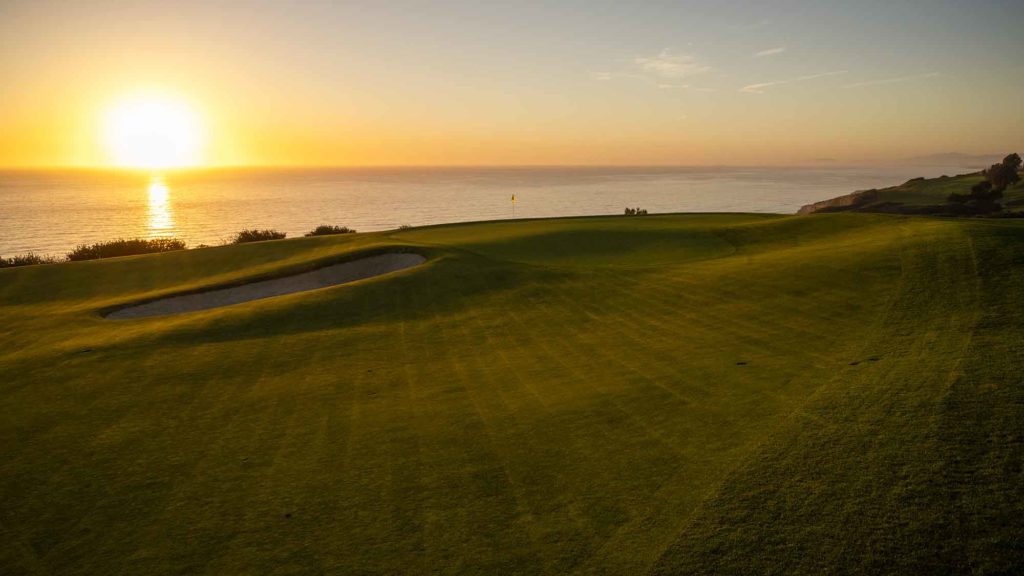
The 2020s are the new 1920s, and players who contend for US Open and PGA titles in the next decade will do so under changed Major-championship paradigms. The restored, originalist principles of many of the upcoming venues – including wider fairways, an absence of trees as hazards, more expressive green contours (possibly necessitating slower speeds), bunkers that shade more towards the penal than the benign, the occasional random bounce and generally more hide-and-seek than “fits the eye” – represent modes of design that seek to promote varied shots above punishing purely poor ones. How players adapt to the new looks and demands of these clubs will determine the next roster of greatness.
‘Championship Courses have embraced the more natural, organic appearances of their early years.’
Then again, the greatest players have always proven they can win anywhere. Jack Nicklaus and Arnold Palmer required no special set-ups. Woods has won at Augusta National, Pebble Beach, St Andrews, and played exquisitely at Royal Melbourne – all courses that demand power, finesse and creativity. He has also won at muscular point-to-point designs like Medinah and Bethpage. The latter style is what we can expect from Torrey this month, when thick rough and bunkers positioned to defend each landing area will mandate contenders drive the ball powerfully and straight and be able to recover from deep traps around the greens, all in accordance with the traditional US Open dictums espoused by Dey, Tatum, Fay and even Jones. It will be a physical, nail-biting grind topped-off with a reachable par 5 at the finish capable of providing late-game explosions of drama.
If this is the end of the Jones era, it’s likely to go out with a bang.
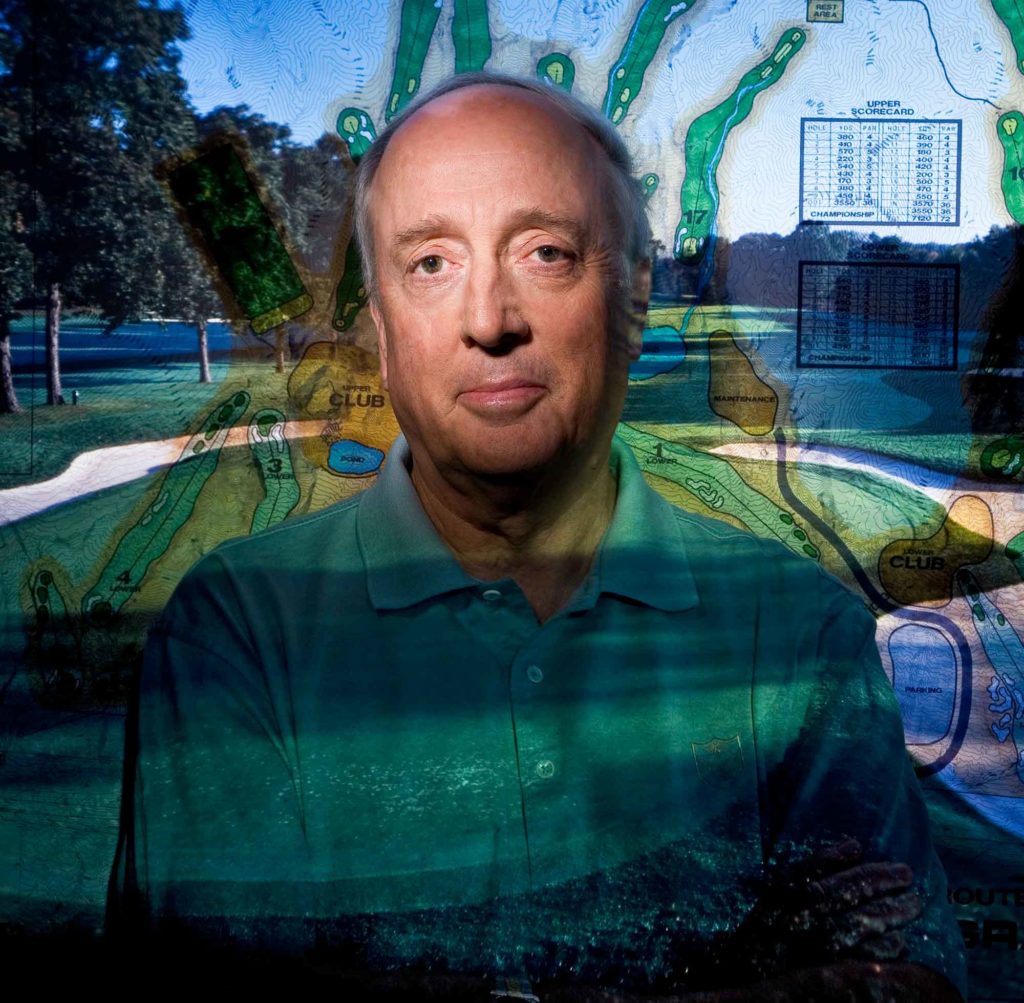
Keeping up with jones
US Open and PGA winners and runners-up on courses remodelled
by Rees Jones.
*Parenthesis indicates Official World Golf Ranking at time of the event
US Open
The Country Club / 1988
Curtis Strange (5), Nick Faldo (12)
Hazeltine National GC / 1991
Payne Stewart (7), Scott Simpson (60)
Baltusrol (Lower) / 1993
Lee Janzen (41), Payne Stewart (16)
Congressional CC (Blue) / 1997
Ernie Els (7), Colin Montgomerie (6)
Pinehurst (No.2) / 1999
PayneStewart (13), Phil Mickelson (11)
Bethpage State Park (Black) / 2002
Tiger Woods (1), Phil Mickelson (2)
Pinehurst No.2 / 2005
Michael Campbell(80), Tiger Woods (1)
Torrey Pines GCse (South) / 2008
Tiger Woods (1), Rocco Mediate (158)
Bethpage State Park (Black) / 2009
Lucas Glover (71), Ricky Barnes (NR), David Duval (NR), Phil Mickelson (2)
Congressional CC (Blue) / 2011
Rory McIlroy (7), Jason Day (19)
Torrey Pines GCse (South) / 2021
To be determined
PGA Championship
Sahalee CC / 1998
Vijay Singh (16), Steve Stricker (45)
Atlanta Athletic Club(Highlands) / 2001
David Toms (19), Phil Mickelson (2)
Hazeltine National GC / 2002
Rich Beem (73), Tiger Woods (1)
Baltusrol (Lower) / 2005
Phil Mickelson (4), Thomas Bjorn (31), Steve Elkington (129)
Medinah CC (No.3) / 2006
Tiger Woods (1), Shaun Micheel (NR)
Oakland Hills CC (South) / 2008
Padraig Harrington (3), Ben Curtis (77), Sergio Garcia (6)
Hazeltine National GC / 2009
Y.E. Yang (110), Tiger Woods (1)
Atlanta Athletic Club (Highlands) / 2011
Keegan Bradley (115), Jason Dufner (78)
Baltusrol (Lower) / 2016
Jimmy Walker (48), Jason Day (1)
Bellerive CC / 2018
Brooks Koepka (4), Tiger Woods (50)
Bethpage State Park (Black) / 2019
Brooks Koepka (3), Dustin Johnson (1)
Photographs by J.D. Cuban

